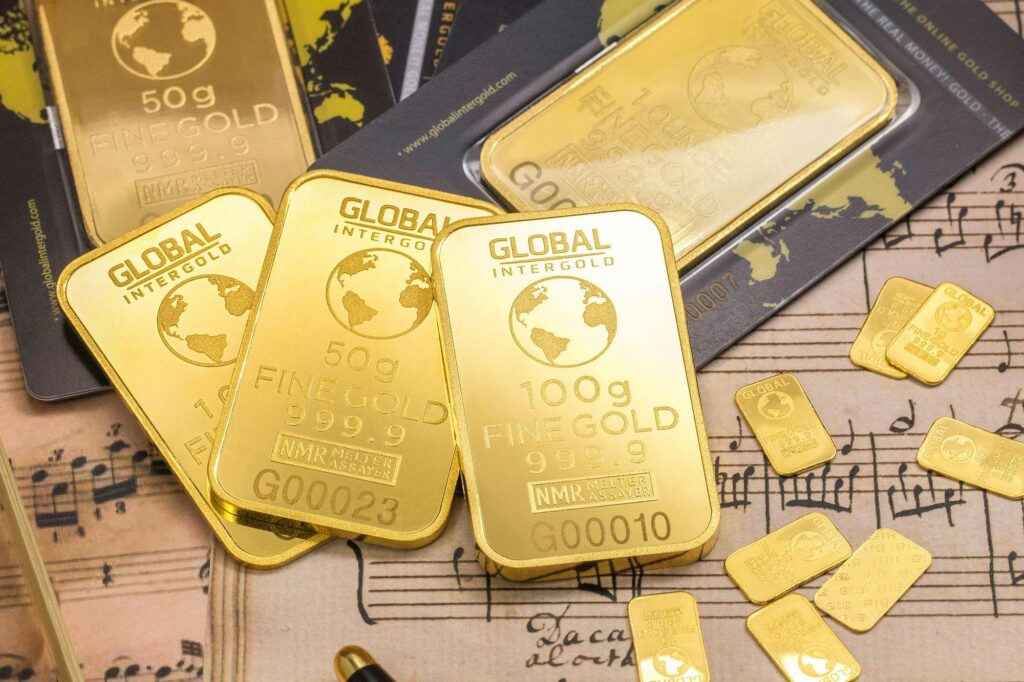
Gold price, historically viewed as a safe haven in times of uncertainty, is currently facing strong resistance in the markets. The primary reason behind this struggle is the rise of the U.S. Dollar (USD), which has gained strength and put pressure on gold prices. As a result, gold investors have been hesitant, waiting for the right moment to re-enter the market. In this article, we’ll explore the factors driving this shift, the relationship between the U.S. Dollar and gold, and what could trigger a change in gold’s trajectory.
The Power of the USD: A Key Factor Behind Gold’s Struggles
The U.S. Dollar has been on a consistent rise, primarily due to a combination of economic factors and aggressive monetary policies by the Federal Reserve. When the dollar strengthens, it becomes more expensive for foreign buyers to purchase gold, as the metal is priced in USD. This reduces global demand for gold, particularly in markets where other currencies are weaker.
Furthermore, a stronger dollar often leads investors to shift their attention toward dollar-denominated assets, such as bonds, which offer higher yields in a rising interest rate environment. As a result, gold has found itself under pressure, with fewer investors willing to place their bets on the precious metal.
The Impact of Rising Interest Rates on Gold
Interest rates are playing a critical role in determining gold’s price movements. When interest rates rise, as seen with the Federal Reserve’s recent actions, gold becomes less attractive. Gold does not provide interest or dividends, so it competes directly with yield-bearing assets such as bonds or savings accounts.
The opportunity cost of owning gold rises in tandem with interest rates. Investors are more likely to choose assets that generate income, rather than holding gold, which does not provide any return. This shift in investor behavior has contributed to gold’s struggles, with many choosing to allocate their capital elsewhere.

Gold’s Traditional Role as a Hedge: Weakened by the USD
For years, gold has been seen as a reliable hedge against inflation and economic instability. Investors often turn to gold when they fear a loss of purchasing power due to inflation. However, in the current environment, the strength of the U.S. Dollar is reducing gold’s effectiveness as an inflation hedge.
A stronger dollar helps mitigate inflationary pressures by making imports cheaper and controlling costs within the U.S. As a result, gold is losing some of its traditional appeal as a safeguard against rising prices. Investors are now exploring other options to protect their portfolios, and gold is no longer the go-to choice for many.
Market Sentiment: Cautious Optimism, but Bulls Hold Back
The sentiment in the gold market is currently neutral to bearish. With the U.S. Dollar continuing its rise and interest rates climbing, many investors are cautious and unwilling to make bold moves in gold. Prices have remained within a narrow range, as gold bulls wait for signs of a potential shift in market conditions.
Investors are closely monitoring U.S. economic data, Federal Reserve policy, and global geopolitical developments, looking for any signals that could suggest a change in the current market dynamics. Until a catalyst emerges, gold is likely to remain in a holding pattern.
What Could Spark a Gold Price Rally?
While gold faces significant challenges, there are several potential factors that could lead to a recovery:
A Decline in the USD
A weakening of the U.S. Dollar would likely boost gold prices. If the dollar starts to lose strength, either due to a slowdown in the U.S. economy or a shift in Federal Reserve policy, gold could become more attractive to international buyers, driving up demand and pushing prices higher.
A Shift in Interest Rate Policy
If the Federal Reserve pauses or reverses its interest rate hikes, it could prompt a surge in gold prices. Lower rates would decrease the opportunity cost of holding gold, making it more appealing to investors looking for a stable store of value.
Geopolitical Risks and Economic Instability
Gold often performs well during periods of geopolitical tension or economic uncertainty. Any escalation in global conflicts or financial instability could drive investors toward safe-haven assets like gold. In such scenarios, demand for gold could increase, leading to a price rebound.
Economic Slowdown
A global economic slowdown or recession could drive a shift toward gold as a protective asset. As investors seek to safeguard their portfolios in the face of economic uncertainty, gold could see a surge in demand, resulting in higher prices.
Conclusion: A Wait-and-See Approach
At present, the gold market remains subdued, largely due to the strengthening U.S. Dollar and rising interest rates. These macroeconomic factors have created a challenging environment for gold, with many investors choosing to stay on the sidelines for now.
However, the outlook for gold is not entirely negative. There are several factors that could trigger a recovery, including a weakening USD, a shift in interest rate policies, or increased geopolitical instability. Investors will continue to monitor these developments closely, as any changes in these dynamics could prompt a change in market sentiment and reignite interest in gold. For now, patience and vigilance are key for those looking to capitalize on a potential gold price rally.
stay here for more updates ;- marketdarpan.com


